The main challenges of Data Centers

Data Centers
Data Centers are factories housing thousands of computer servers storing very large amounts of data. It is a physical place, a room, a building, an infrastructure that include servers. The server is a networked computer used to host data that can be accessed anywhere, anytime, using the cloud system. A growing trend of IT outsourcing and cloud migration is driving the need of companies and organizations for connectivity, storage, big data development, and Internet deployment. The objectives are to optimize costs, increase flexibility and ultimately improve the quality of services.

Problematic
Data Centers have a huge global impact on energy consumption and the environment. Indeed, the digital sector consumes nearly 10% of global electricity production in 2015, and the data centers represent between 20 and 30% of this sector. Only one “big” Data Center can consume on its own about 100 million watts ! (CNRS – Le Journal, 05.16.2018).
In France, data center consumption was around 3TWh in 2015 and the expected increase in the number and size of data centers will inevitably lead to an increase in this consumption. This overconsumption of Data Centers is due to a continuous supply of appliances, but also and especially to the permanent use (24/24) of air conditioning (about 50% of the electricity bill). This very high worldwide consumption of electricity from data centers, computers, networks and other digital tools has only increased since 2015, and will ony increase in the years to come. That is about 4% of our greenhouse gas emissions, which is extremely important.
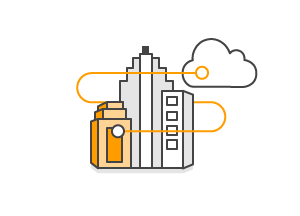
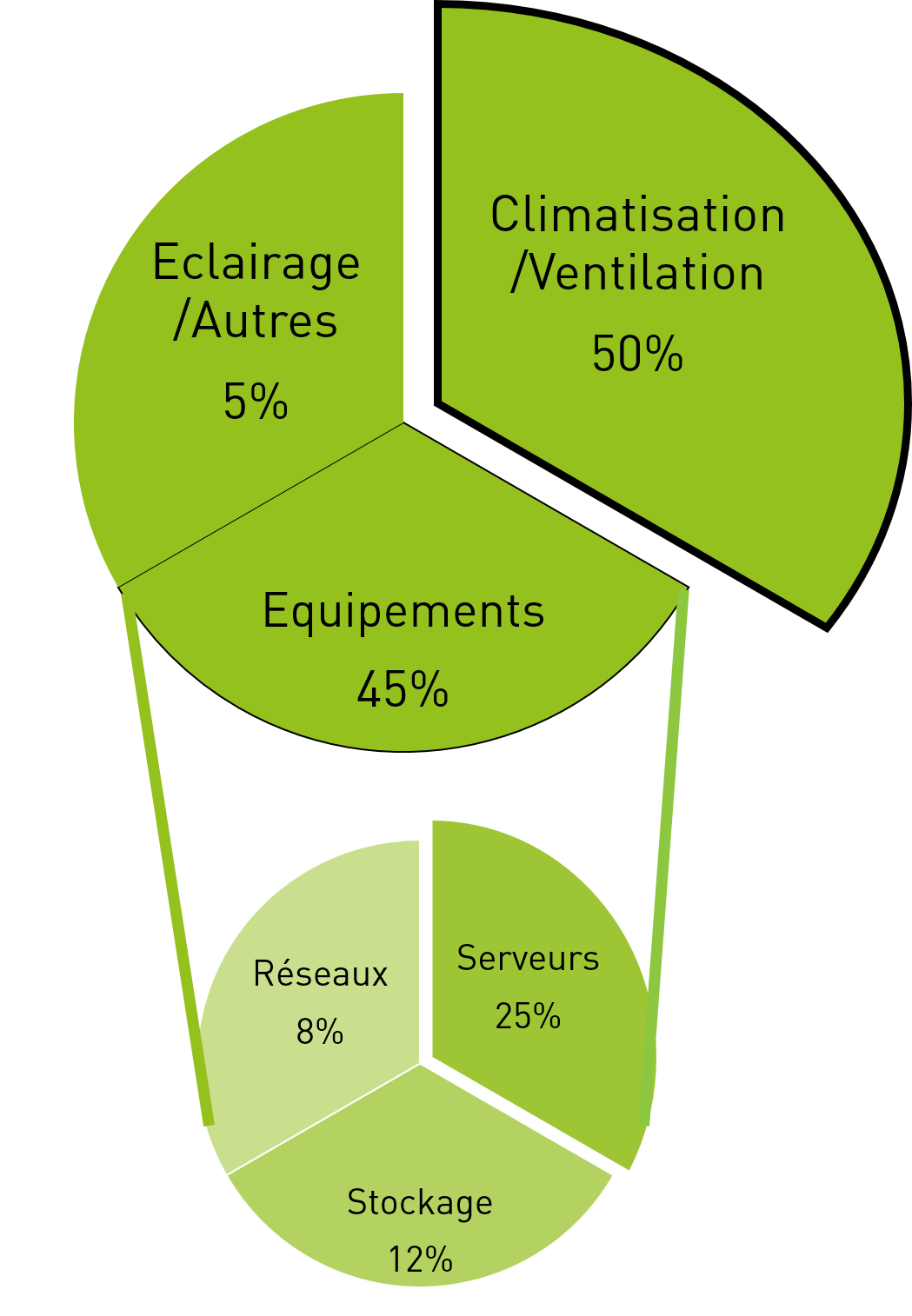
Repartition of the electronical consumption of a Data Center by category.
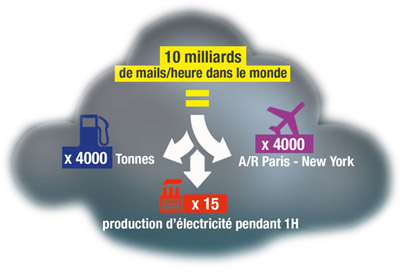
Representation of the pollution created by sending and storing mails.
Data Centers Evolution
In 2018, Big Data Centers accounted for more than 2/3 of the installations and nearly half of the new data centers in the world. The trend is to capture a large part of the needs of these large infrastructures, which can develop rapidly. In France, there are expected to be 200 large digital power plants in 2020, with the opening of 4 Microsoft Data Centers and an expansion of the Data4 network. This growth in the number of Data Centers by around 9% per year should gradually slow down. France wants to tr the giant data center operators by encouraging their coming : a diminution of the electricty tax. By 2021, the new server systems will enable more data center storage capacity (approximately 4 times more), which should make server administration easier and reduce downtime.
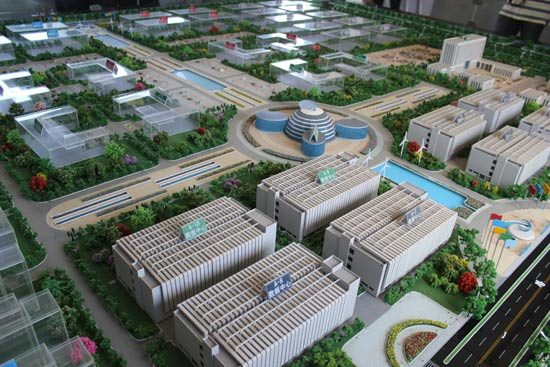
The largest data center in the world is the China Telecom Inner Mongolia Information Park in the heart of Mongolian capital, with 1.2 million servers.
Phosphoris Group Solutions
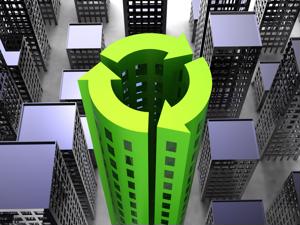
The decision support tool also allows the valorisation of alternative solutions of energy control and reduction of environmental impact, such as free-chilling. This solution saves energy consumption by up to more than half of conventional air conditioning. Other possible approaches are the integration of Data Centers in BEPOS (Positive Energy Building) or BEPAS (Passive Energy Building) or even eco-neigborhoods to valorize their continuous rejections.
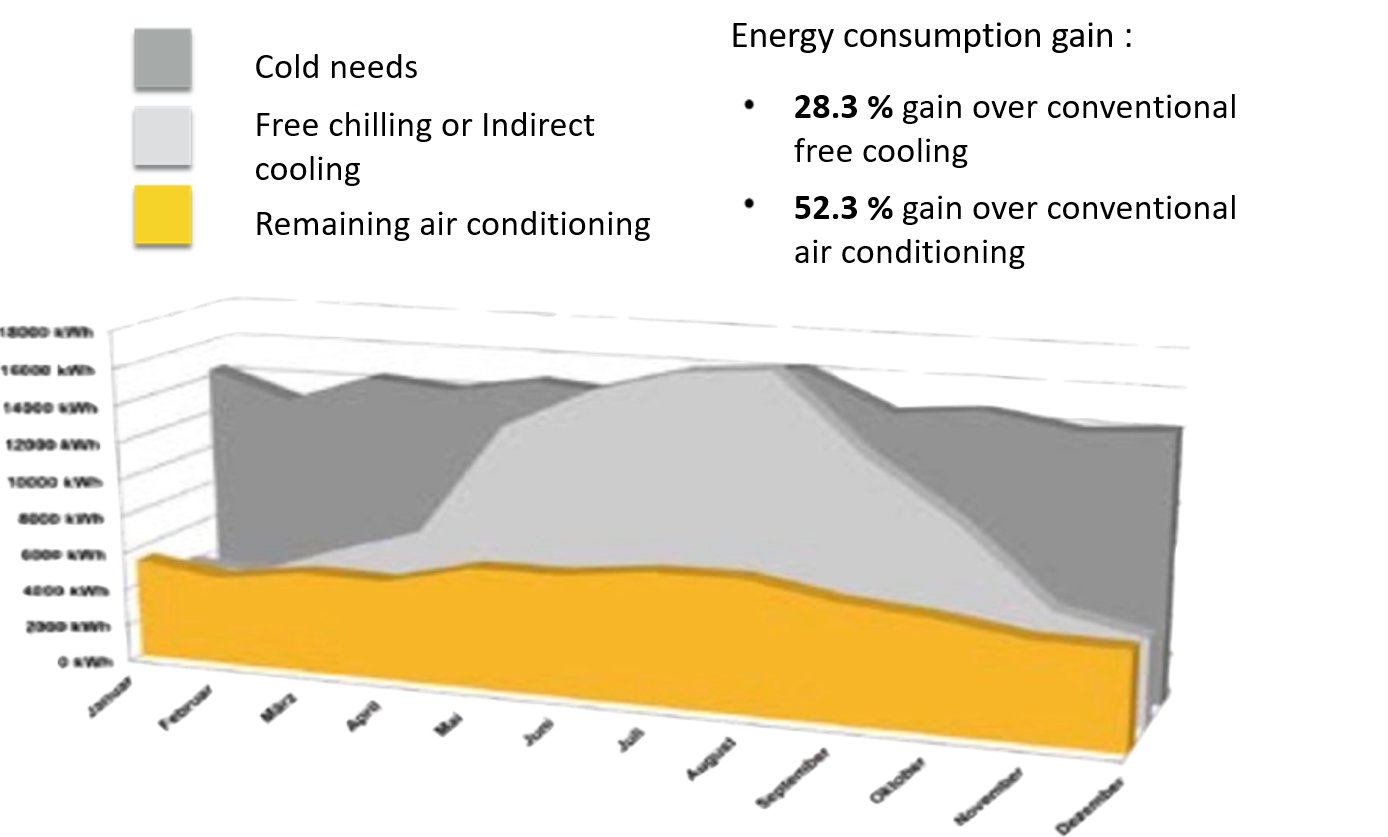
Preparing the exponential need for Data Centers and smart objects, BE A. Garnier has decision support tools and solutions to control the energy need of today’s and tomorrow’s buildings.
Go further
Find all the Phosphoris’ Expertises on its Business Page : design studies, execution, technical coordination and energy optimization.



